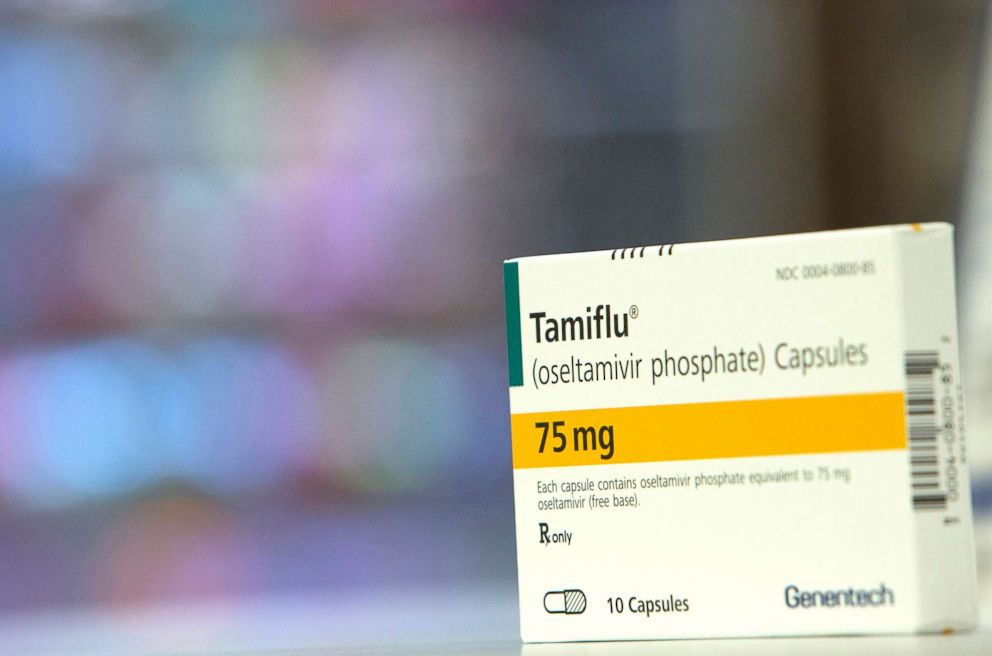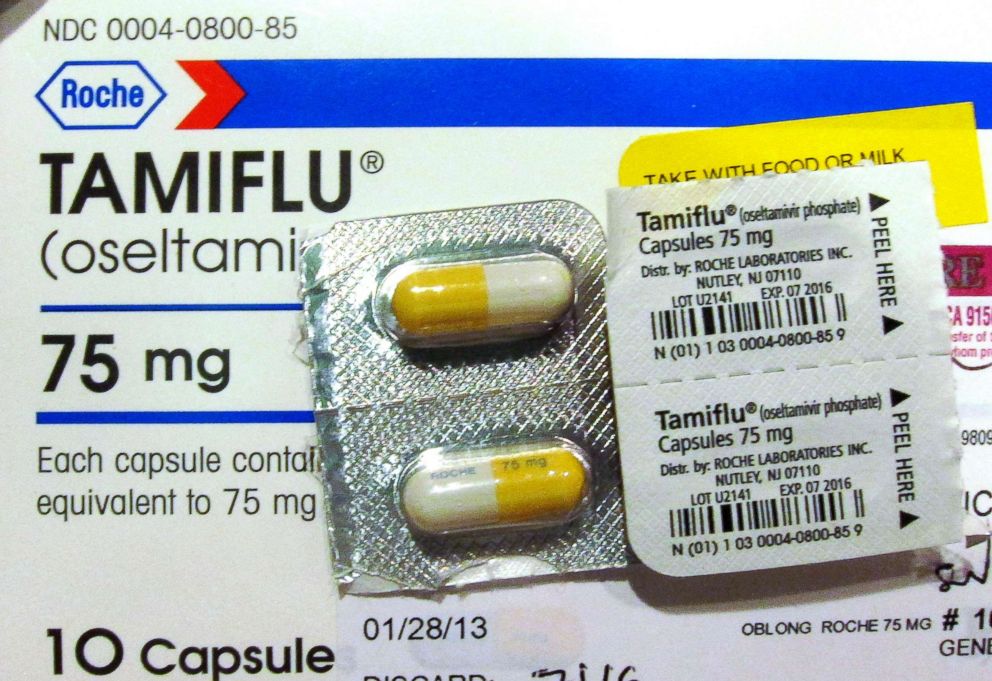Tamiflu: What you need to know about this flu medicine
What you need to know.
— -- As the nation weathers what may be the worst flu season in years, many with the illness -- and those around them -- may find themselves getting prescriptions for a flu antiviral medicine. The most popular such drug is oseltamivir, often known by the brand name Tamiflu.
Below are answers to a few of the most common questions about Tamiflu.
What is Tamiflu and what does it do?
Tamiflu is an antiviral medication that your doctor can prescribe to treat or prevent infection from Influenza A and B. This medication works by preventing the spread of the flu virus in your body. Tamiflu comes in either pill or liquid form.
When is Tamiflu prescribed?
If your doctor suspects that you have the flu, or if you test positive for the flu, antiviral drugs such as Tamiflu can be started at that time. Tamiflu works the best within two days of illness onset, but your doctor may prescribe it beyond that period if he or she thinks it will help.
Your doctor might also prescribe you Tamiflu after exposure to the flu, even if you are not feeling sick. Typically, you will only receive Tamiflu for prevention if you are considered to be at greater risk of developing complications from the flu, like pneumonia. If you have chronic medical conditions such as asthma or heart disease, are older than 65 or are pregnant and have been exposed to the flu, you should speak to your doctor about taking Tamiflu.

What are the side effects of Tamiflu?
Common side effects include nausea, vomiting, diarrhea and headaches.
Is there a generic form of Tamiflu, and does that work the same way?
Yes, the generic name for Tamiflu is called oseltamivir. It works the same as Tamiflu and prevents the spread of influenza A and influenza B once it has caused infection. No studies have shown oseltamivir to be less effective than the brand name Tamiflu.
Can my child have Tamiflu?
Yes. The American Academy of Pediatrics and the CDC both agree that Tamiflu should be given to any infant or child who has had flu-like symptoms for less than two days. If your child is younger than 2 years old or has a chronic medical condition such as asthma, your doctor may recommend Tamiflu if they have been exposed to flu or even if they have had more than two days of symptoms.
Depending on your child’s age, they can take Tamiflu as a liquid or as a pill. The dose is based on their weight, so it might not be as much as an adult dose.
There are certain situations where your pediatrician might not advise taking Tamiflu. This could be because flu-like symptoms started more than two days ago, in which case Tamiflu might not be very helpful. If you child is vomiting, your pediatrician might also advise against Tamiflu since it can worsen nausea and lead to dehydration.

How effective is Tamiflu?
Tamiflu is most effective if taken within 48 hours of symptoms beginning. If taken early, Tamiflu can decrease the typical length of symptoms by 12 to 24 hours. It may also improve the severity of flu symptoms.
Is there any other treatment for flu besides Tamiflu?
The FDA has approved three antiviral medications to treat flu this season: Tamiflu (generic name oseltamivir), Relenza (generic name zanamivir), and Rapivab (generic name permaivir). Tamiflu is most commonly prescribed.
Relenza is an inhalable powder taken twice per day for five days. It is approved for those 7 years old and older, but is not recommended for people with breathing problems such asthma or COPD. Rapivab is an intravenous drug taken once over a 15- to 30-minute period approved for those 2 years old and older.




